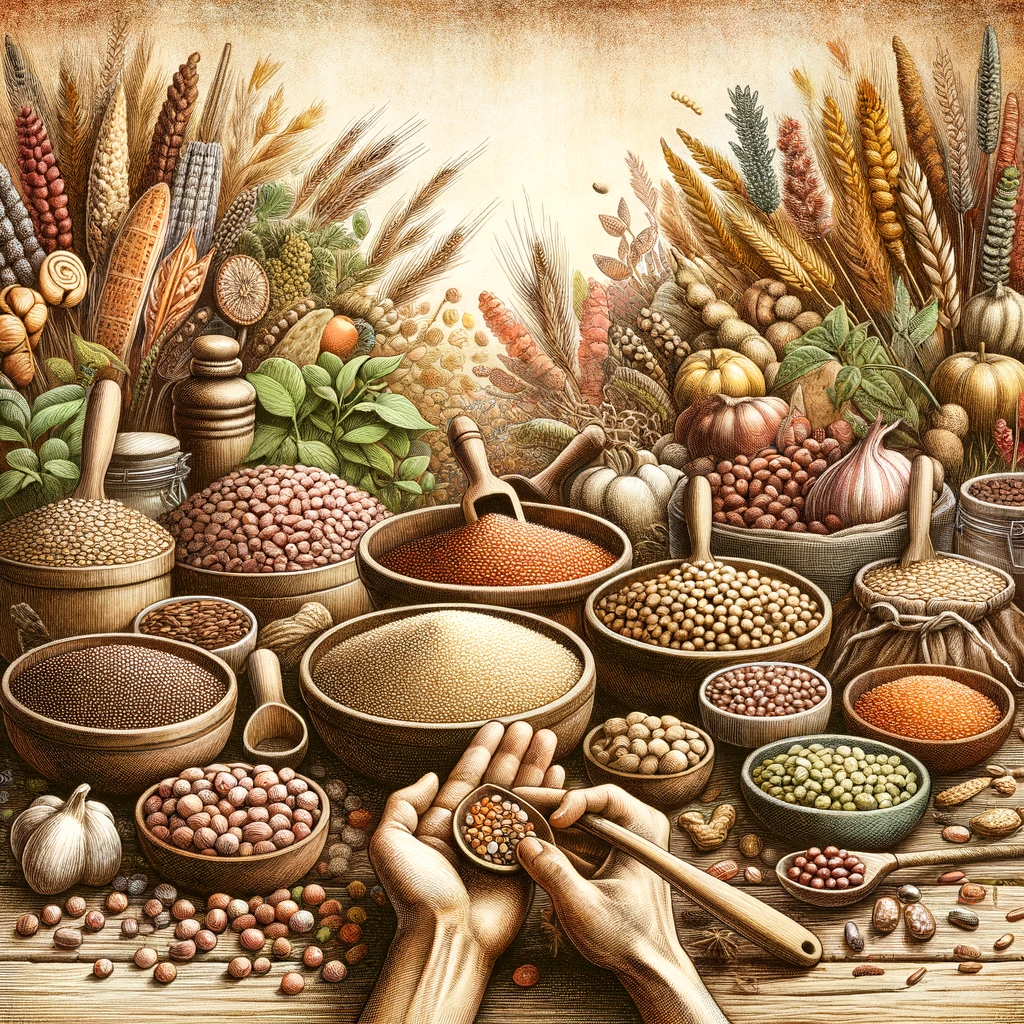In our fast-paced world, it’s easy to get caught up in the whirlwind of modern food trends, often neglecting the treasures of our culinary past. Rediscovering forgotten ingredients like ancient grains and legumes not only adds depth and flavor to our meals but also contributes to sustainable and nutritious eating. In this article, we’ll delve into the fascinating world of ancient grains and legumes, highlighting their nutritional benefits, environmental advantages, and how to incorporate them into your diet. Let’s embark on a journey to revive these timeless ingredients!
1. The Nutritional Powerhouses of the Past
Ancient grains and legumes, such as spelt, einkorn, amaranth, and chickpeas, have been cultivated for centuries. These age-old ingredients offer an array of nutritional benefits:
- Higher Nutrient Density: Ancient grains and legumes are often richer in essential vitamins, minerals, and antioxidants than their modern counterparts.
- Rich in Fiber: They provide a significant source of dietary fiber, aiding in digestion and maintaining a healthy gut.
- Balanced Macronutrients: These ingredients offer a well-balanced profile of carbohydrates, protein, and healthy fats.
- Gluten-Friendly Options: Some ancient grains, like quinoa, are naturally gluten-free, making them suitable for those with dietary restrictions.
2. Sustainability and Environmental Benefits
Reviving ancient grains and legumes also aligns with sustainable and eco-conscious food choices:
- Reduced Water Usage: Many ancient grains and legumes require less water for cultivation compared to modern crops, reducing water scarcity concerns.
- Crop Diversity: Promoting diverse crops helps combat monoculture farming and the associated issues of soil depletion and pest outbreaks.
- Enhanced Biodiversity: Growing these heritage ingredients supports biodiversity and the preservation of heirloom plant varieties.
- Decreased Need for Pesticides: Some ancient grains have natural pest resistance, reducing the need for chemical pesticides.
3. Rediscovering Forgotten Recipes
Embrace the culinary traditions of our ancestors by incorporating ancient grains and legumes into your daily meals. Here are some inspiring ideas:
- Ancient Grain Bowls: Create hearty grain bowls with quinoa, farro, or freekeh as the base. Top with roasted vegetables, protein of your choice, and a flavorful sauce.
- Legume-Based Soups: Whip up comforting soups using lentils, chickpeas, or black beans for added texture and nutrition.
- Homemade Flatbreads: Use einkorn or spelt flour to make deliciously rustic flatbreads or whole-grain pizzas.
- Amaranth Porridge: Enjoy a nutritious breakfast by making a creamy amaranth porridge with your favorite toppings.
4. Finding Ancient Ingredients
Locating these forgotten ingredients may require a bit of effort, but it’s worth it. Look for them in specialty food stores, farmers’ markets, or online retailers. Some local farmers might even grow and sell heirloom varieties, contributing to the revival of these ancient treasures.
Conclusion
Rediscovering forgotten ingredients like ancient grains and legumes isn’t just a culinary adventure; it’s a step towards healthier eating and a more sustainable future. By incorporating these nutritional powerhouses into your diet and supporting local producers, you can make a meaningful contribution to both your health and the environment. So, let’s embrace the past to create a healthier and more sustainable future, one delicious meal at a time.
